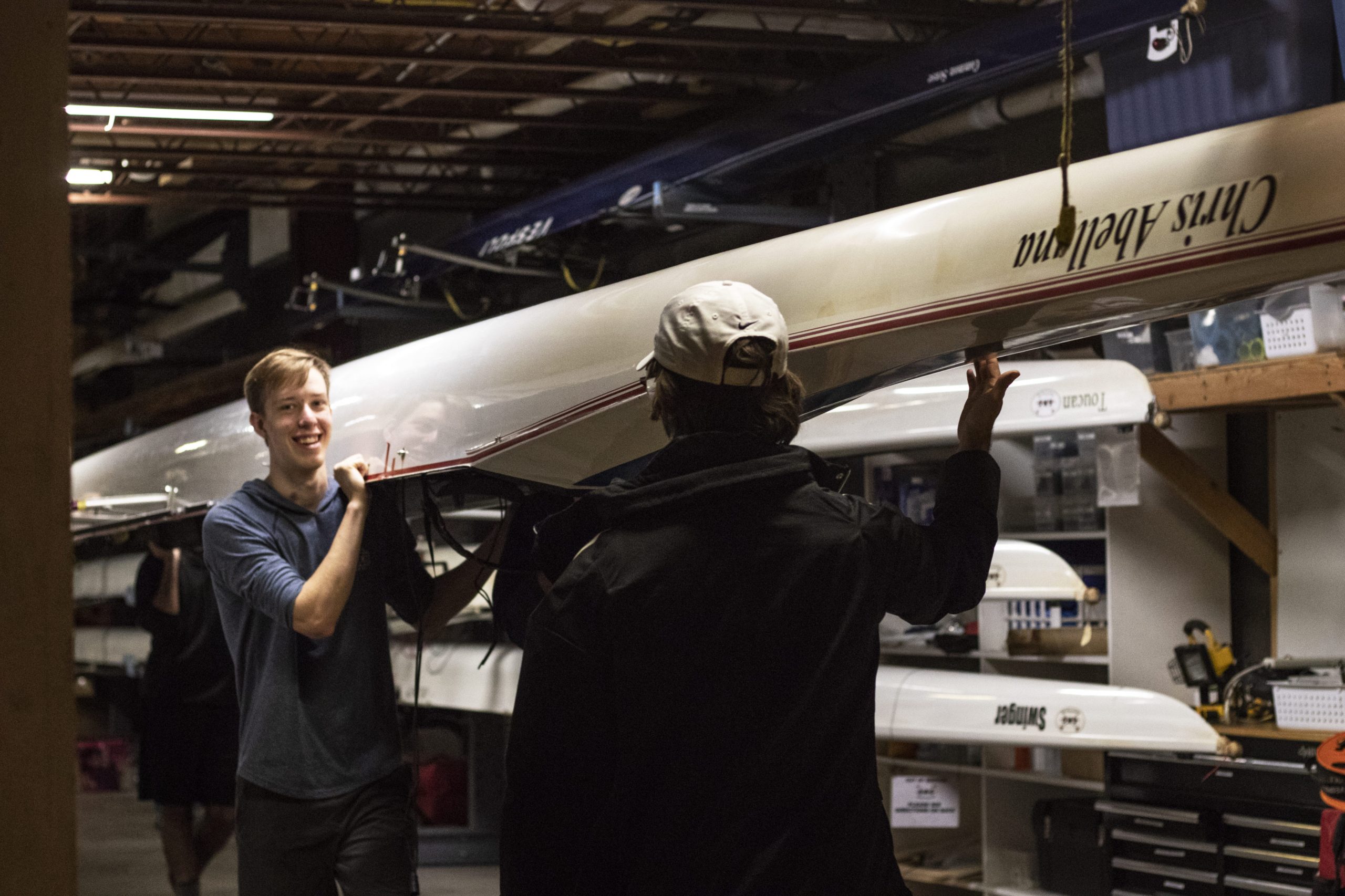
Georgia State’s rowing club has been around since ‘89, but still many students know little about the team or the sport itself.
Rowing is the oldest sport in collegiate competition. But, its popularity has fallen tremendously since its early days.
The very first collegiate race was between Harvard and Yale in 1852. The first rowing club in the United States dates back to 1839, 26 years before the abolition of slavery. Rowing was also one of the original sports in the modern Olympic Games. Baron Pierre de Coubertin, who founded the Olympic Games and the International Olympic Committee, was actually a rower himself.
Georgia State currently has 20 members in the rowing club. Those 20 are split up by experience, level and gender. The club has novice and advanced levels and both have four different events for men and women.
The events are based on type of boat and stroke. Boats hold one, two, four or eight passengers. The two strokes are “sweeping” and “sculling.” When sweeping, each member rows with both hands on a single oar. Sculling is when boaters use two oars, one in each hand.
Events are named based on the number of rowers and which stroke. Singles, doubles and quads are all sculling competitions. Pairs, fours and eights are sweeping competitions.
A rowing tournament is called a “regatta,” and the Georgia State team travels to regattas across the Southeast. The Georgia State Recreation Center provides a van for the team to travel together and covers airline expenses for national competitions. The largest regatta that Georgia State competes in has around 200 participating teams, but some national regattas host even more.
The school also provides some funding to help offset equipment and tournament costs. Rowing is considered a tier one club sport, which receives the most funding, around $4,000-5,000 per semester from the recreation center. Unfortunately, recent budget cuts are driving those numbers down. Prices for competitions usually cost around $3,000-4,000 per semester without considering travel costs, the price of equipment, food and lodging.
Rowing costs can run extremely high. Private rowing clubs may cost around $1,000 or more per season. Georgia State’s rowing dues this year are relatively low, at only $250 per semester. For perspective, dues in previous years have been as high as $450. At some schools, rowing club dues are in the thousands.
Cost is often a deterrent for new members, so the club’s presidents work hard to keep membership fees as low as possible.
“We’re trying to make it more accessible for everyone. It’s a really affluent sport and cost is the main barrier,” Thomas Gray, co-president of the Georgia State Rowing Club, said.
A portion of the dues typically go toward paying the coaches, but in recent years the budget hasn’t been able to support them.
Georgia State’s coaches are now practically volunteers due to the lack of funding. Some larger programs, like Ohio State, are able to pay even assistant coaches around $50,000 per year. Coaches at smaller programs like Georgia State make closer to $2,000 annually.
It also requires a very high level of commitment to be a member of a rowing club. Regattas are typically far away, and rowers frequently forfeit their weekends to pile into a van and compete. Practices are held early in the day, and the physical demands are extremely high. The physical exertion of a 2,000-meter race has been compared to playing back-to-back basketball games by the Princeton National Rowing Association.
“I wake up at 3:30 [a.m.], but there are people who live on campus who only have to wake up at like 3:45 or 4:00,” Anna Reuter, co-president of the Georgia State Rowing Club, said. Practices run from 5 a.m. to 7 a.m. every morning, Monday through Friday.
Rowing is a full body workout and draws on both physical strength and cardiovascular endurance. It requires explosive power, with controlled technique and breathing. Georgia State head coach Chad Porter said that the team uses lots of circuit training like running and other endurance workouts to prepare.
As far as team sports go, rowing is easily one of the most cooperative.
“[Rowing is] the best team sport experience I ever had,” Wyatt Martin, former rower for Saint Andrews Rowing Club, said. “It was probably the most cohesive team experience. It was like we were one person just moving the boat.”
Porter uses drills and film to improve his team’s synchronization. Individual excellence doesn’t mean very much in rowing.
“I call rowing the only true team sport. Literally your actions in the boat have to mimic the other rowers in the boat,” Porter said. You’re not just cooperating, you’re emulating each other as well. You’re trying to do the exact same thing as many times as possible.”
Another major factor is technique, which is more important than power. A team with great technique will beat a less skilled team with more strength.
“On the water is not about power,” Porter said. “It’s far more about technique and adding power to that technique.”
Training includes both land workouts and water workouts. On land, the most common machine is the ergometer, commonly known as the “erg.” The erg provides a full-body cardiovascular workout that engages the arms, legs and core while building strength and endurance. The motion seems to use mostly arms, but a majority of the work is done by the legs.
“You’re generating probably 80-85 percent of your power from your legs. Your arms really don’t provide anything, they’re really just there to hold the oar,” Porter said. “The rest of your body generates the power, your arms really just hang on for dear life.”
Rowing requires a lot of time, money and energy. Those who are willing to push through are rewarded with camaraderie, physical fitness and memories that last a lifetime.
